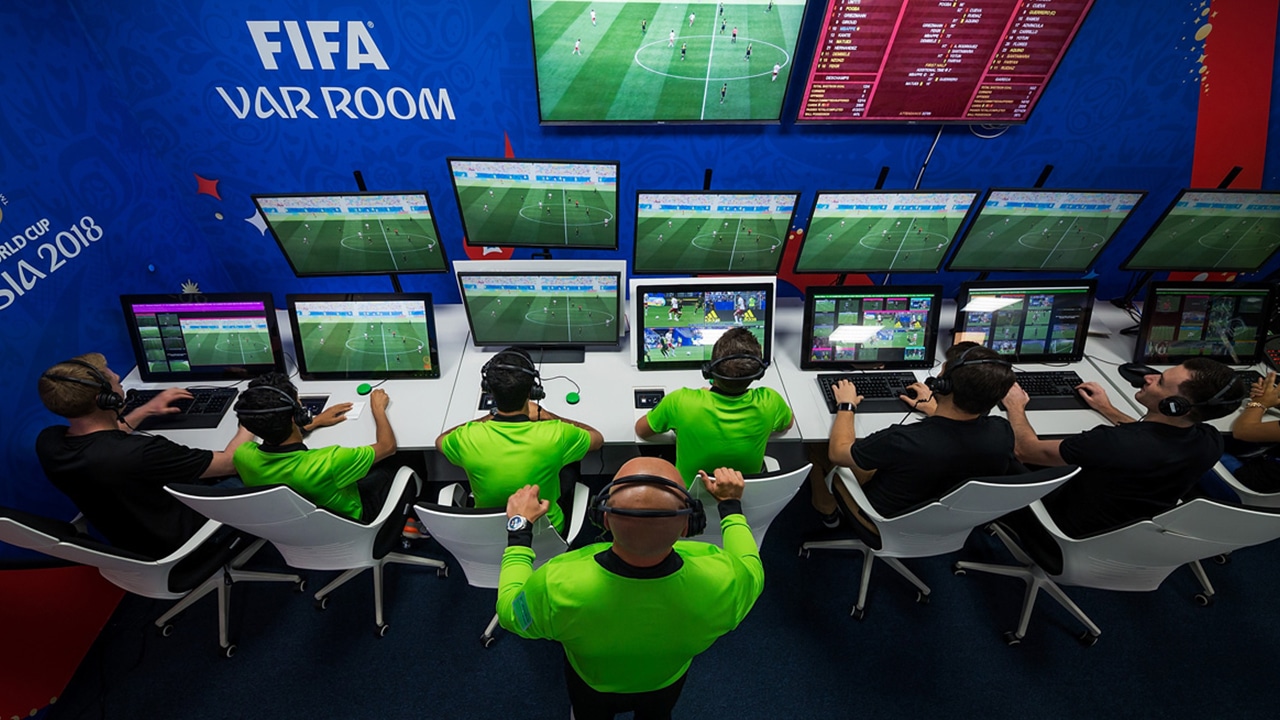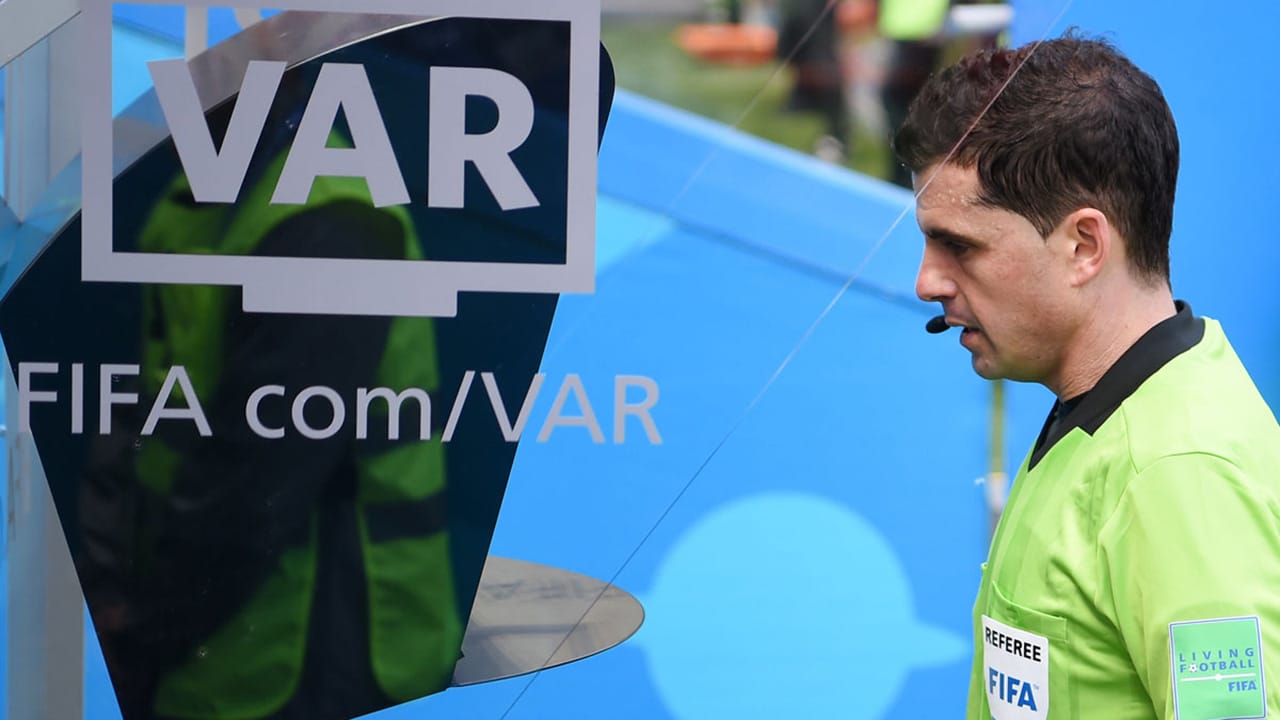

Explainers
Setting the VAR: Football’s newest technology
And where better to shine than the 2018 FIFA World Cup
The 2018 FIFA World Cup is in full swing, with the last few matches about to take place en route to the Round of 16 on Saturday. While the world’s greatest football players are taking center stage, another main attraction in the tournament is the football world’s latest technology: the Video Assistant Referee.
The Video Assistant Referee or VAR has been adopted in sports like tennis and rugby, and recently by football leagues such as the English FA Cup and the Bundesliga in Germany. Ideally, the VAR helps make decisions for referees much easier and more accurate — especially for crucial, game-changing calls. But is the technology useful and helpful in every possible way?
What is the VAR?
The VAR is a video system that feeds information to referees on the pitch through a wireless earpiece. Assistant referees gather the information away from the stadium and forward these to the referees when a call is contested. The VAR marks the huge step football leagues are taking to digitize football, and has been used since last year.
It utilizes a goal line technology that allows the cameras in the stadium to scan the pitch at every minute. With this technology, movement on the pitch is detected at all possible angles and calls can be made more precisely. Assistant referees inside a control room have access to all these cameras and they send live feed to the pitch via tablet or iPad should the referees want to look at the footage themselves.
The VAR reviews game-changing calls on the football pitch at the time a protest is filed. FIFA lists only four game-changing calls to be considered: goals, penalties, direct red card incidents, and mistaken identity. The VAR checks the validity of these calls and sends the information to the referees. Do note, however, that the referees themselves still have the final decision on what call to make.
The system made its debut in a FIFA Club World Cup in December 2017 between Atletico Nacional and Kashima Antlers. The referee rewarded Kashima with a penalty after reviewing a play inside the penalty box.
Putting the VAR to work
2017 also saw the VAR’s debut in the English FA Cup, but it had its own set of controversies along the way. During a quarterfinal match between Tottenham and Rochdale, a goal by Tottenham was reversed for unclear reasons cited by the VAR. German football league Bundesliga also utilized the VAR during its latest season, but received mixed reactions from players and fans.
In the 2018 FIFA World Cup, the VAR takes center stage as a decision-making aide for referees in the group stages. The first instance was a non-call on a foul by Spain’s Diego Costa in their 3-3 epic against Portugal. Costa would slice the Portugese defense to tie the game at 1-1 at the time, but did so while taking down Pepe from Portugal. After the review from the VAR, the referee stood by his decision to count the goal.
https://www.youtube.com/watch?v=Hf8d06eXdxY
The second instance happened in the France-Australia game when French striker Antoine Griezmann was tackled inside the box, yet the referee called for play to continue. Griezmann received a pass from Paul Pogba, and virtually blitzed through the Socceroo’s defensive line. Griezmann was awarded the penalty after reviewing footage from the VAR as the French went on to win, 2-1.
The third instance was in the Peru-Denmark game when another penalty was awarded to Christian Cuerva of Peru. Denmark’s Yussuf Poulsen tackled the Peruvian in the box, yet the referee called for the play to continue until the incident was reviewed via VAR. However, Cuerva missed the penalty and Poulsen scored in another possession to give the Danish the win, 1-0.
A VAR too high or too low?
While the VAR has only been around for well over a year, it isn’t exempt from both praise and criticism. Many people have shown their praises for the newest technology applied to the football world. The VAR now adds certainty and legitimacy to calls made by referees during matches, instead of them making the same wrong call every time. With football players and managers focusing on the tiniest of details to improve their game, information from the VAR becomes important.
The VAR provides an opportunity for football games to be fair and balanced. Referees now have different vantage points to look at when making calls that ultimately change the outcome of the game. People came to see a quality match wherein the players truly shine, but sometimes the referee’s poor decisions hamper that. In this regard, there is no excuse for not making the right decision with all the video evidence available.
However, a lot of people also have strong feelings against using VAR. While the effort to make the right calls is appreciated, it gets in the way of what makes football so special. When referees call for the VAR — especially with contested goals — fans become anxious instead of jubillant. Usually, fans go into a frenzy the moment the ball goes through the net — no replays needed. It’s as if the game feels all too unrealistic because of all the technicalities.
For football players and coaches, the VAR only adds confusion to fans. Because some football stadiums are built without any big screens, fans become unaware of what’s happening when the referee calls for the VAR. Iran’s coach Carlos Queiroz lambasted the use of the VAR for close, judgment calls — particularly the offside call on his squad in a loss to Spain. He believes that the VAR was put in place to correct obvious mistakes by referees, not debatable calls.
Final verdict
The VAR is a fairly new technology introduced in the world of football, and surely, it’s not perfect. It’s a bold take on digitalizing football, keeping up with the technological demands of today. Because football is decided by people making the right calls at the right time, the VAR becomes an important part in establishing the basis for such calls. The VAR is a useful solution for referees to make the right decisions on the pitch.
However, we must be critical about how the VAR should play in during very crucial moments in the game. The VAR should help give fans a fair yet exciting football match without losing its spirit. With the Round of 16 coming up, all eyes will be on the VAR and whether it will help make the road to the finals interesting or not.
At the end of the day, football fans came to see the best players in the world do what they do best, and no amount of technology should get in the way of that.


It’s that time of the year again!
Since 2020, Samsung has equipped the Galaxy S20 Ultra with an ultra-fast 45W fast-charging speed compared to the Galaxy S10+‘s measly 15W charging standard. Four years after, 45W still remained on the Galaxy S24 Ultra.
For three consecutive years, Michael Josh has conducted a dedicated charge test to know whether its 45W “Super Fast Charging” works as promised on the latest line of Samsung’s Galaxy flagships. The Galaxy S24 Ultra isn’t an exemption to that.
Curious to know? Find out in our Galaxy S24 Ultra and Galaxy S24+ Charge Test.
Explainers
ChatGPT Explained: Should we be scared of AI?
Will the talking robot take over the world?

Back in the earlier days of the internet, an emerging but short-lived trend involved chatbots who could generate conversation with whomever it talked to. Does this sound familiar? Today, a similar phenomenon is creating a lot of waves online, headed by the infamous ChatGPT. The exceedingly popular ChatGPT is turning heads out of fear that the technology will eventually upend society and eradicate a lot of jobs.
But what exactly is ChatGPT? How is it different from language programs in the past? Is the world right to worry about them?
On the rise of language learning
ChatGPT is hardly the first software to inexplicably generate comprehensible dialogue without human intervention. Decades ago, the internet hosted rudimentary versions of today’s chatbot technology. The concept is somewhat similar, though. The early versions relied on a database of responses from human users. If you asked about coffee, for example, the answer you get will likely come from the logs of another user who talked about coffee in the past.
Because the system was imperfect in its infancy, part of the appeal was trying to get the software to fumble a conversation. However, if it did mess up, you can count on it asking you what it should have said. The next time someone asks the same question, the software might mirror what you said, creating a learning process between the software and the user.
Today, chatbots — meaning those usually used by businesses today — operate in the same way. If a customer comes with a query, the software will rely on a set of responses to most appropriately address the user’s problem. If the software can’t come up with a solution, the ball usually gets passed on to a human consultant.
Is ChatGPT just another chatbot?
Though the label certainly gets thrown around, ChatGPT isn’t strictly a chatbot. Instead, the software uses GPT-3.5, a specific language model created by OpenAI. Whereas early and more rudimentary versions of the same technology can already store an unbelievable amount of information in its memory, ChatGPT can analyze billions of words and the relationship between them.
Further, OpenAI extensively trains the software, ensuring that comprehension and grammar can live up to today’s standards. The learning is supervised. In fact, the company even has a makeshift reward system to ensure that the software puts out the most appropriate response. With users also contributing to the software’s learning process, ChatGPT is quickly emerging as a powerhouse for the technology.
The results speak for themselves. While users can generate simple conversations with the software, ChatGPT can just as easily answer more extensive queries with lengthier responses. If you ask it to create an essay about Christopher Columbus, for example, it can write a lengthy piece that can easily fool a casual reader. It can even handle more speculative queries. In a sample published by the developer, ChatGPT can answer what would happen if Columbus discovered America in 2015.
What’s it good for?
Based solely on what the software can do, ChatGPT can find its purpose in today’s world. The software can improve voice assistants and chatbots all over the internet. It can make big strides in the world of automation, enabling a more responsive interface between user and software.
On a more human aspect, the software can also handle more professional jobs with simpler prompts such as those involving simple marketing copy. It can help with more ephemeral research efforts, allowing users to get simple answers for otherwise complex questions.
And, on a more technical side, ChatGPT can reportedly analyze and detect what’s wrong with a piece of coding. With the software, developers can use ChatGPT to potentially repair code without having to pore over every single line. Allowing a powerful tool to inspect code speaks volumes for a lot of applications all over the world including smart vehicles and technical machinery.
However, as with every piece of technology, users will always find a way to use something beyond what it was originally designed for. ChatGPT is now changing the world of education as students are using the software to do their homework for them. Though a lot of the sample texts look like they can fool only lower levels of education, a Wharton business school professor (via Business Insider) recently stated that he would have been fooled by a ChatGPT essay, grading a sample with a passable grade of B or B-.
Should we be scared of ChatGPT?
ChatGPT is undoubtedly rocking the world of education. While some schools have banned the technology outright, others are debating on the software’s impact on how schools are taught. Since ChatGPT deals out more factual information, could education reinvent itself to teach more personal, tailored learning, rather than just the ability to spit out memorized facts. (“Factual” might even be an exaggeration. CNET, which recently experimented with AI-written articles, discovered a plethora of errors from using the software.)
Now, education isn’t the only world in peril. The creative industry is facing an extreme challenge wherein ChatGPT can potentially cause workers their jobs. Though the danger certainly seems real, the limitations of technology are also real. ChatGPT can create comprehensible text that can fool a human, but it will likely stumble with conceptualization.
A piece of software is just software. Even if it can write an essay about existentialism, it cannot think of the concept metaphysically. In the same way, even if it can show you a photo of a parrot, it cannot think of that photo as anything but a pattern of pixels. To a language learning software, words don’t mean anything else besides their relationship with each other. It’s the same thought process as a dog learning to run to its human when its name is called. The dog doesn’t know that you just said its name (or even the mere concept of a name); it just knows to do a certain action after hearing a specific sound.
Can ChatGPT change the world? Overall, the jury is still out, but it’s unlikely that a piece of learning software can do much to replace human-centric work. Regardless, it’s important to think of how ChatGPT can improve (or detriment) humanity.
Like with other supposedly dangerous technology, the world of technology is a Pandora’s box. We can never put the genie back into the bottle. Once it’s out, it’s out. Instead of worrying about how technology can destroy the world, the more appropriate response is to figure out how it can better humanity without sacrificing anyone’s wellbeing in the process.

When you’re looking to buy a new device, which specs should you pay attention to? Which upgrades should you consider?
In this video instead of reviewing the latest new smartphone, we’re going to talk about its unsung hero: RAM.
We partnered with @MicronTech to help you understand all the magical things that you get to do on your smartphone thanks to internal memory and storage.
To find out more about Micron’s mobile memory and storage solutions and how they’re bringing mobile innovation to life, visit https://www.micron.com/solutions/mobile or watch our explainer video.
-

 Events2 weeks ago
Events2 weeks agoStellar Blade: PlayStation taps cosplayers to play Eve for game’s launch
-

 Features1 week ago
Features1 week agoFortify your home office or business setup with these devices
-

 Gaming2 weeks ago
Gaming2 weeks agoThe Rogue Prince of Persia looks like an ultra-colorful roguelite
-

 Accessories2 weeks ago
Accessories2 weeks agoLogitech unveils G Pro X 60 gaming keyboard: Price, details
-

 Reviews1 week ago
Reviews1 week agorealme 12+ 5G review: One month later
-

 Gaming2 weeks ago
Gaming2 weeks agoLenovo confirms development of a Legion Go 2
-

 Deals2 weeks ago
Deals2 weeks agoTCL P635 TV: Big savings for TCL’s anniversary
-

 Gaming1 week ago
Gaming1 week agoNew PUMA collection lets you wear PlayStation’s iconic symbols






























